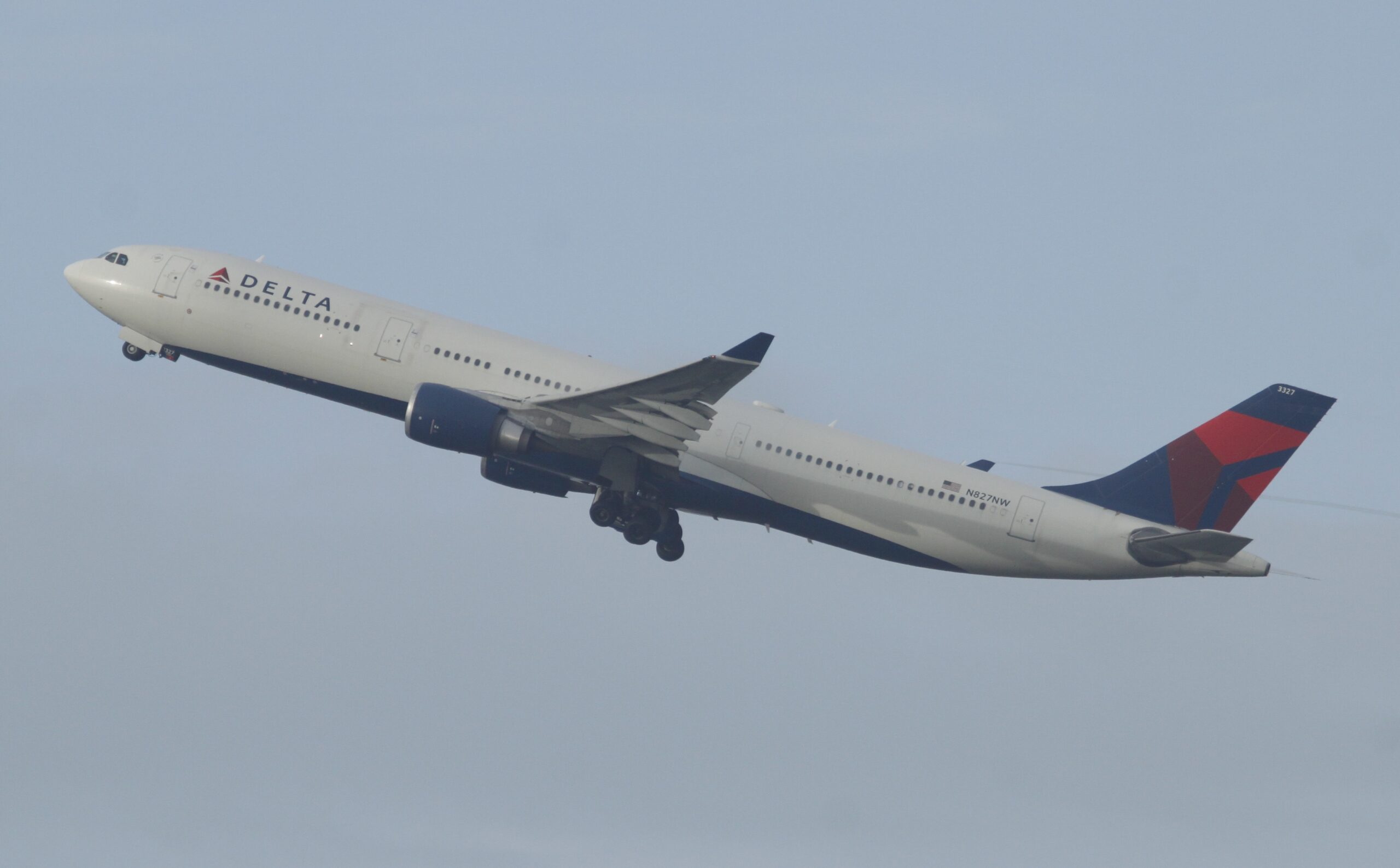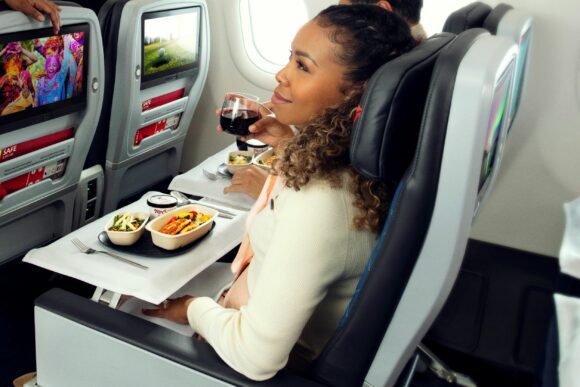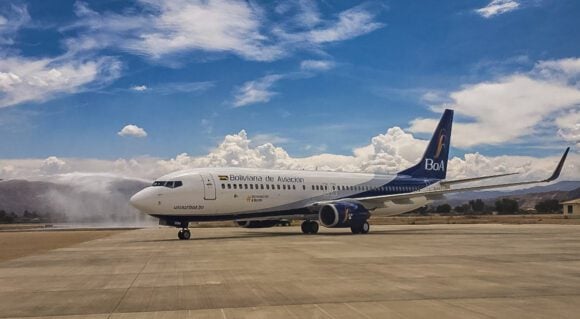
MG 8287 scaled
Delta Air Lines is very pleased with its 2022 result as it turned a $-940 million Q1 loss into a $1.318 billion full-year profit and made good progress in restoring the balance sheet. Forget the Covid years 2020 and 2021, said CEO Ed Bastian, 2022 was the most difficult year from an operational perspective. The carrier expects to fully recover capacity to pre-pandemic levels this summer, it said today in its earnings release. Delta eyes full recovery this summer on the back of strong 2022.
The FY22 net profit compares to $280 million in 2021, although Delta prefers to compare its results with 2019 when it reported a $4.767 billion profit. We look at 2021 figures here. The pre-tax profit was $2.7 billion, with earnings per share of $3.20. The operating profit was $3.661 billion versus $1.886 billion in 2021, with an operating margin of 7.8 percent. Total revenues (GAAP) ended at $50.6 billion (2021: $29.9 billion), or Adjusted $45.6 billion ($26.7 billion). Passenger revenues (GAAP) were $40.2 billion ($22.5 billion). Cargo revenues reached a record high of $1.050 billion ($1.032 billion).
The operating cash flow was $6.2 billion and free cash flow was $244 million. Operating expenses of $46.9 billion included an almost doubling of fuel costs to $11.5 billion, while non-operating expenses saw a higher loss on investments ($-783 million) but lower impairments. Delta ended the year with $9.4 billion in liquidity and $22.3 billion in net debt. Gross debt was down by $4.5 billion.
Delta’s December quarter was the strongest of the year with an $868 million net profit (2021: $-408 million). By comparison: Q1 produced a $-940 million net loss, Q2 a $735 net profit, and Q3 a $695 million profit. The operating profit was $1.470 billion (2021: $263 million), with total revenues of $13.4 billion ($9.5 billion). Adjusted operating expenses were $11.9 billion and include $2.8 billion in fuel costs, down on the $3.3 billion in Q3 that was the high point of the year.
The partnership with American Express produced a full-year remuneration of $5.5 billion or $1.5 billion in Q4. This should grow to over $6.5 billion this year and over $7.0 billion in 2024.
Premium Select, including premium meals, has been very popular in 2022. (Delta)
Premium is king
Delta is seeing continued robust demand, driving domestic passenger revenues up by seven percent and those in the international network by five percent over 2019. Strong demand for Premium products was confirmed by thirteen percent higher revenues in Q4 over 2019, eight points higher than those in the main cabin. Premium Select accounted for 55 percent of total revenues last year compared to just five percent for basic Economy, said President Glen Hauenstein, who expects this to exceed sixty percent this year.
Delta will continue the roll-out of its new premium cabins, which should be available on 84 percent of the international widebody fleet by this summer. The introduction of free Wi-Fi in February should further bolster Delta’s premium position. Business travel is also recovering well and hit eighty percent of 2019 levels in the December quarter. Hauenstein said that corporate bookings have been very strong in the past week.
Despite numerous operational challenges – not the least the December storm-, Delta maintained its number 1 completion factor and on-time arrival performance and was awarded the most on-time airline in North America in Cirium’s recent survey. Operations were robust thanks to the hiring of 25.000 new staff, which represents almost a quarter of its 90.000 workforce. To express its gratitude to the staff, Delta will pay $500 million in bonuses to them in February around Valentine’s Day.
Guidance for 2023 reiterated
Bastian and Chief Financial Officer Dan Janki iterated Delta’s recently announced guidance for 2023 announced last December during the Investor’s Day, with Q1 revenues to be up by fourteen to seventeen percent of 2019 and an operating margin of between four and six percent. Full-year revenues should be up by fifteen to twenty percent, with margins up by ten to twelve percent.
This is all based on the continued strong demand that Delta is seeing during the new year despite operating in Q1 at one percent lower capacity versus 2019 and taking labor contracts with higher salaries into account. Bastian said that Delta has reached an agreement in principle with its pilots, but he was unwilling to discuss the details “out of respect for the pilots.”
Passenger revenues were driven by the transatlantic. And they look strong for Q2, with bookings expected to set a new record this spring and summer and should be at 108 percent capacity, said Hauenstein. Most of that will come from gauge as Delta enters a more efficient fleet. Latin America is also performing very well, while the recovery in South America now accelerating thanks to the joint venture with LATAM.
The Pacific/Australia should produce new records in Q1, with South Korea fully rebuilt while Japan is in for a very strong summer. Delta plans to rebuild its capacity to China during the year but will take a step-by-step approach. “We are not going to get ahead of ourselves, we will be mindful to see what demand warrants,” said Bastian.
As Janki said: “As we move through the year, scale and efficiency will drive a decline in 2023 in non-fuel CASM versus 2022. While approaching 2019 capacity provides scale benefits, we are still bearing the costs of fully restoring our network to the peak summer levels, with a continued emphasis on operational reliability during this ramp-up. We expect to complete our rebuild in the second half, with the majority of our fleet reactivated and training levels of our pilots reverting to historical levels.” Non-fuel unit costs are expected to be down by two to four percent. Delta intends to pay cash for $2.4 billion in debt maturities with excess liquidity.
Fleet
Delta Air Lines took delivery of 69 aircraft in 2022, including Airbus A220s, A321neo’s, A330-900s, and A350-900s, plus “gently used” Boeing 737-900ERs. It placed an order for 100 MAX 10s during the Farnborough Airshow, with deliveries to start in 2025.
Views: 4




